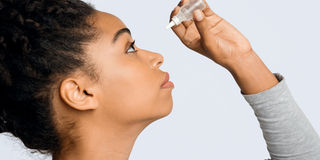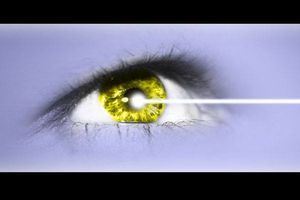Emergency care for common eye injuries

What you need to know:
- Eye injuries as a result of daily activities are very common.
- It is important to seek medical care as soon as possible after First Aid is given, in order to avoid further injury to the eye.
- Get familiar with what sort of emergency treatments are best for different types of injuries.
One of the most important senses is the sense of sight. The eyes are used to see the world around everyone, and it can be a scary experience when they are injured.
There are many ways eyes can be damaged, such as:
- Dust or dirt in the eye
- A foreign object in the eye
- Scratched cornea
- Bleeding in the eye
- Infection
- Cuts or bruises around the eye
Most of these injuries are minor and can be treated at home with some simple First Aid. However, more serious injuries may require medical attention.
First Aid for chemical splash
First Aid for the eyes is essential in the event of a chemical splash. This injury should be treated as a medical emergency and first responders should be contacted immediately. If you are the first responder, you will need to flush the eyes with water for at least 15 minutes. (Important note: Do NOT use other home remedies such as oil or spirit.)
Hold the person's head under a faucet or use an irrigation syringe filled with clean water.
After 15 minutes, the person should be taken to the hospital for further treatment.
Chemicals can cause severe eye damage so it is important to seek medical help as soon as possible.
First Aid for foreign objects in the eye
If you have a foreign object in your eye, it is important to take quick action to remove it. Depending on the size and location of the object, you may be able to remove it yourself. However, if the object is lodged in your eye, you should seek medical help. In the meantime, you can take a few initial steps:
- Do not rub your eye as this could further damage the eye or push the object deeper into the tissue. Instead, blink a few times to try to dislodge the object.
- If blinking does not work, try using water to flush out the object.
- Do not use any other liquids as they could further irritate the eye.
First Aid for cuts in or around the eye
If you have a cut in the delicate area around your eye, it is important to seek medical attention as soon as possible. In the meantime, there are some things you can do to promote healing and reduce the risk of further injury:
- Clean the wound with water.
- Apply pressure to the wound to stop any bleeding, but if the injury is in the eye, do not apply pressure to the eyeball itself.
- If possible, cover the wound with a clean dressing or bandage.
- Do not try to remove any foreign objects from the eye, as this could cause further damage.
First Aid for bruises around the eyes
Eye bruises can be painful and unsightly, but they are usually not serious.
- Gently apply a cold compress to the area to reduce swelling.
- Do not apply pressure to the area, as this could cause further damage.
- Over-the-counter pain medication can be taken to help relieve any pain.
- You should seek medical attention if you have any vision problems or severe pain.
First Aid for infections
Eye infections can be serious and require prompt treatment. Therefore, note:
- Do not touch or rub the eye as this could spread the infection.
- Do not share towels, pillowcases, or any other items that could spread the infection.
- Apply a compress to the eye to help reduce pain and swelling. Use a cold compress for itching, redness or warmth in the area, and a cold compress to reduce discharge if there is any.
- If possible, keep the affected eye clean and free from make-up.
- Seek medical attention as soon as possible, as some infections can lead to permanent vision loss if not treated promptly.
When in doubt, always seek medical attention
If you are ever unsure about the severity of an eye injury, it is always best to seek medical attention.
Do not try to treat the injury yourself if you are not sure what to do. Some eye injuries can lead to permanent vision loss or other serious complications, so it is better to be safe than sorry.
There are many types of eye injuries, each requiring different types of First Aid. Therefore, it is important to be familiar with the different types of injuries and how to treat them. Next, taking quick action and following the proper care steps can help reduce the risk of further damage, as well as promote healing.




